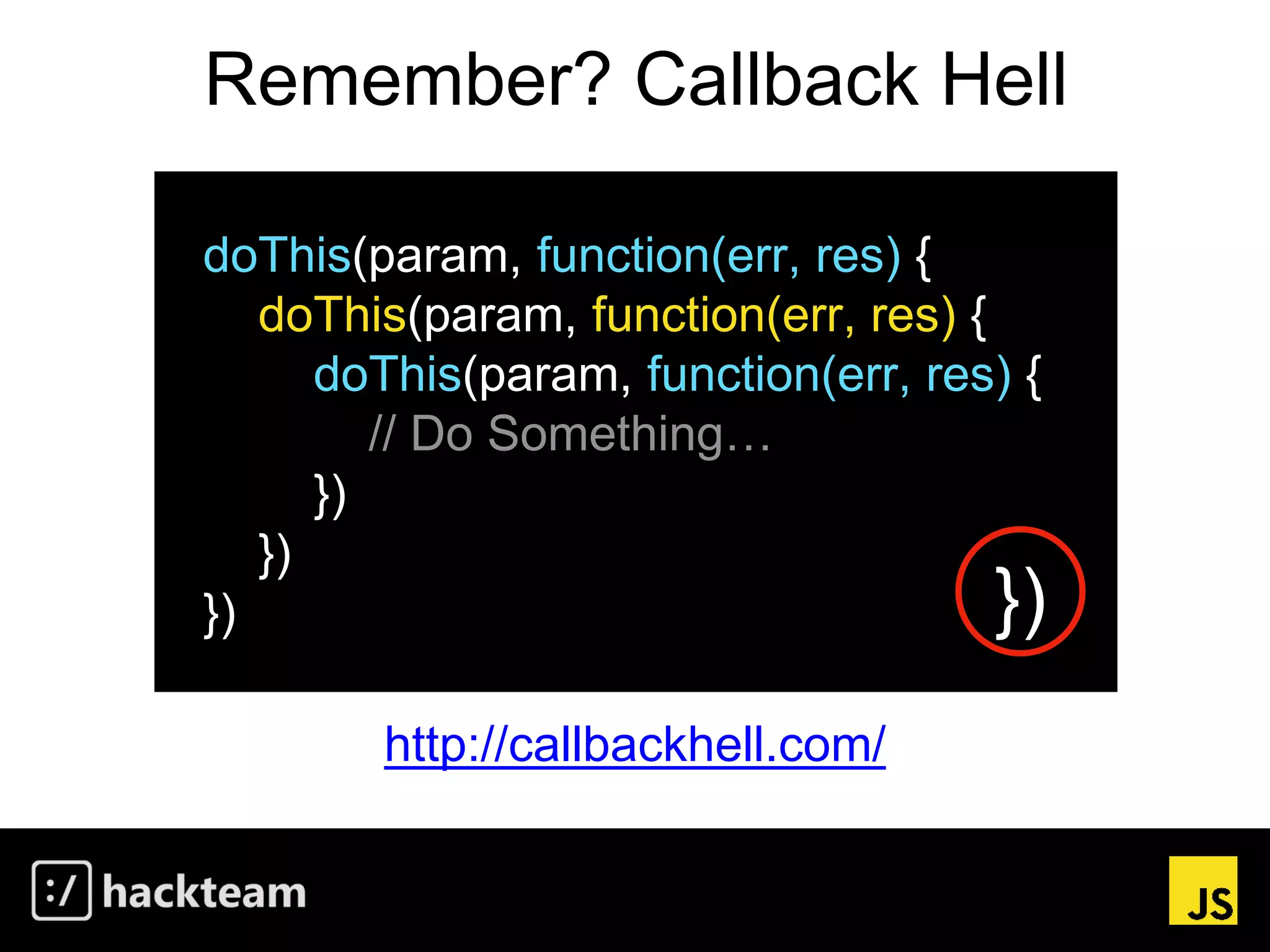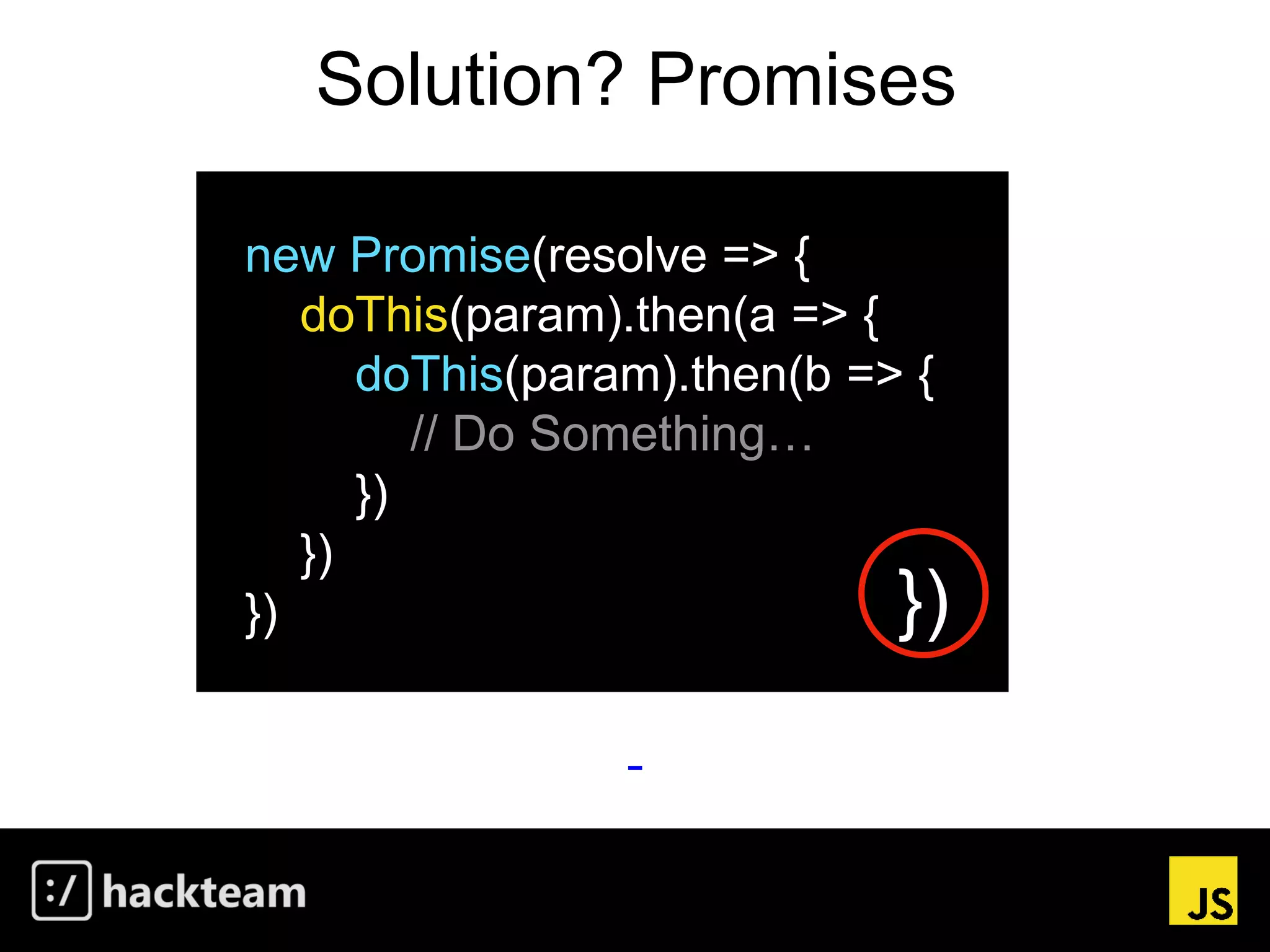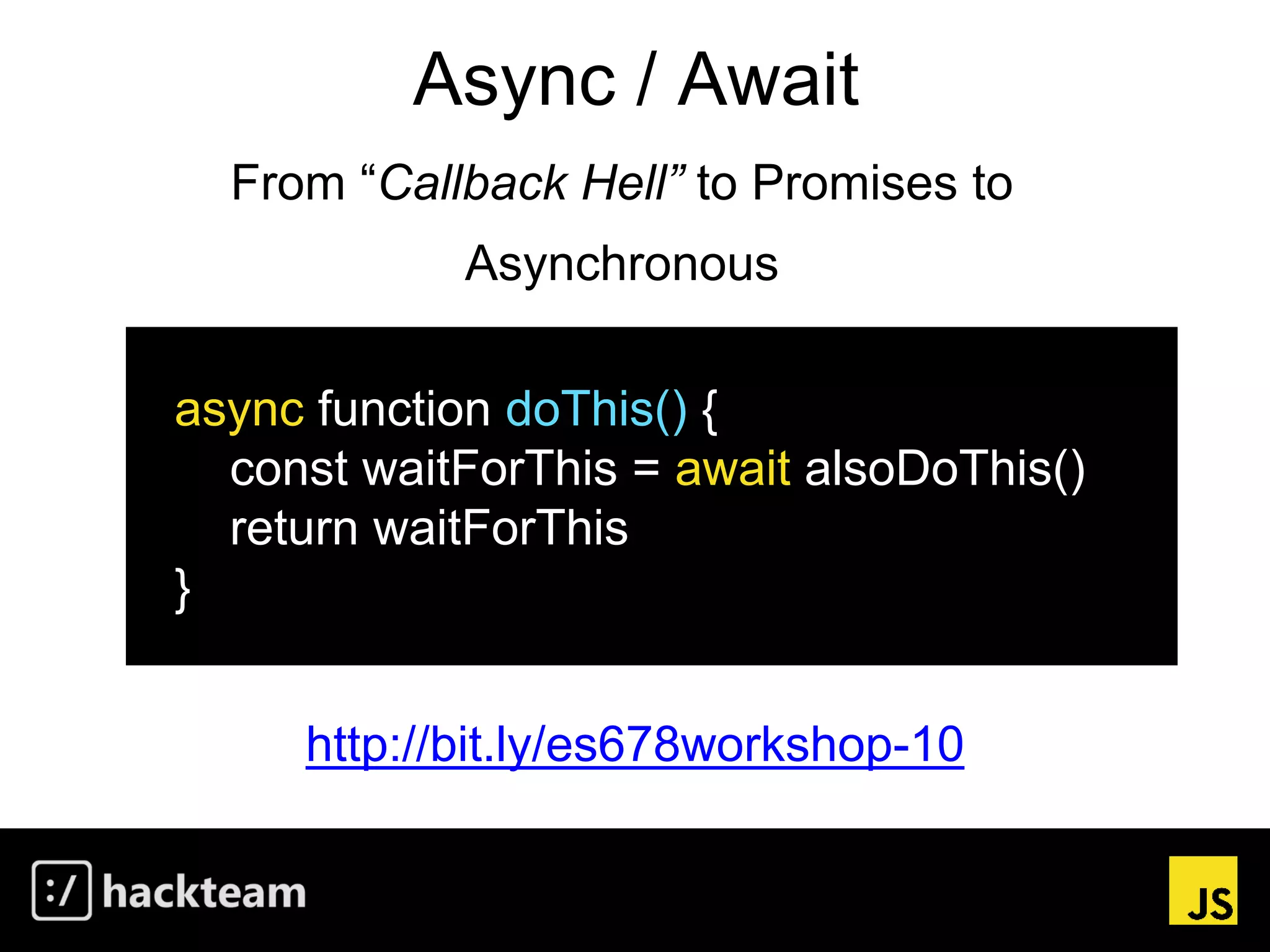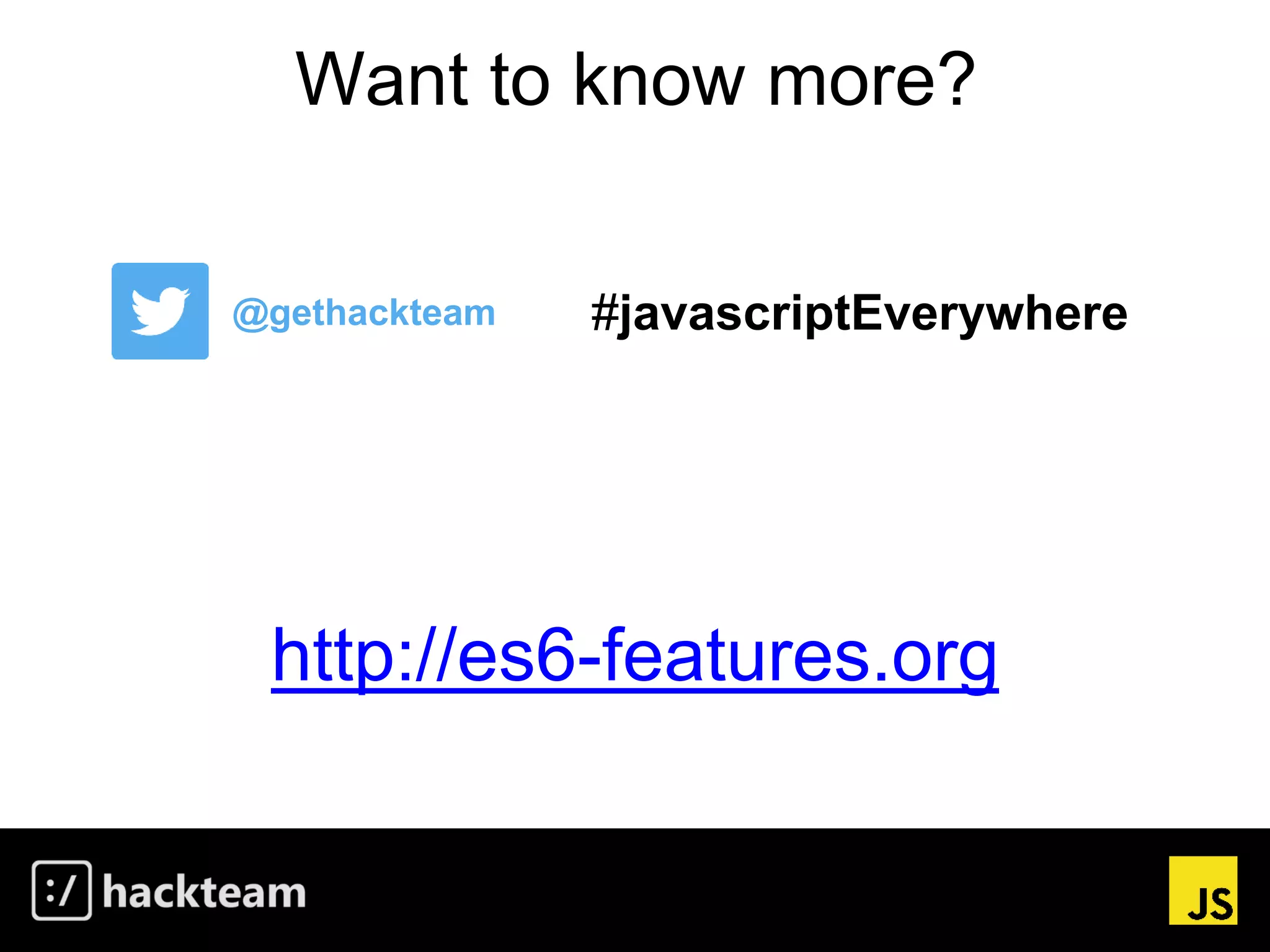This document summarizes an introductory workshop on JavaScript ES6/7/8 features. It discusses what ES stands for and how versioning works. Key topics that will be covered in the workshop include importing modules, arrow functions, spread/rest operators, classes, let & constants, template literals, object literals, destructuring, and more. Links are provided for code examples on CodePen to demonstrate each feature. The document also discusses how newer JavaScript features like promises and async/await help solve issues like "callback hell" from previous versions.
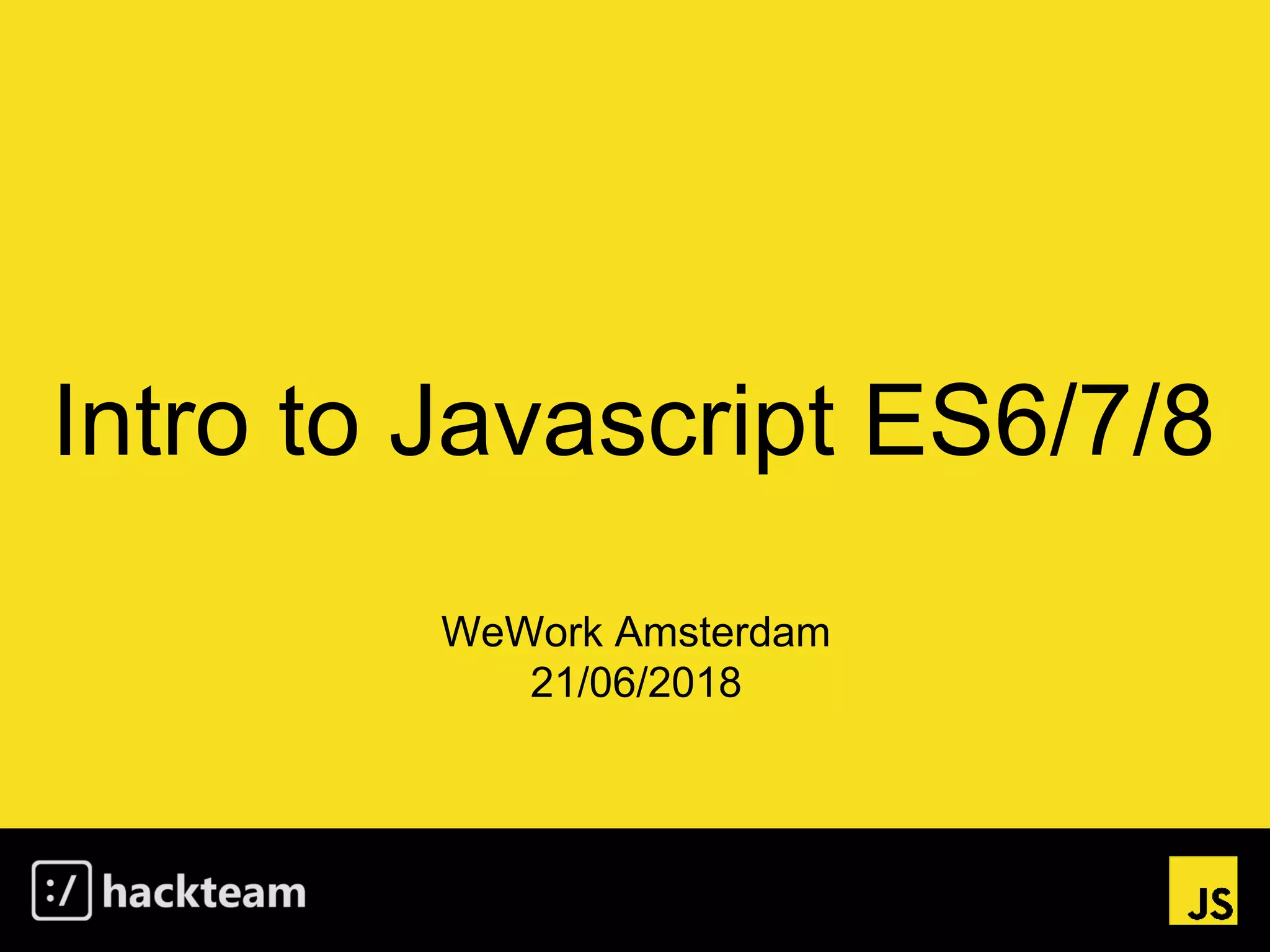
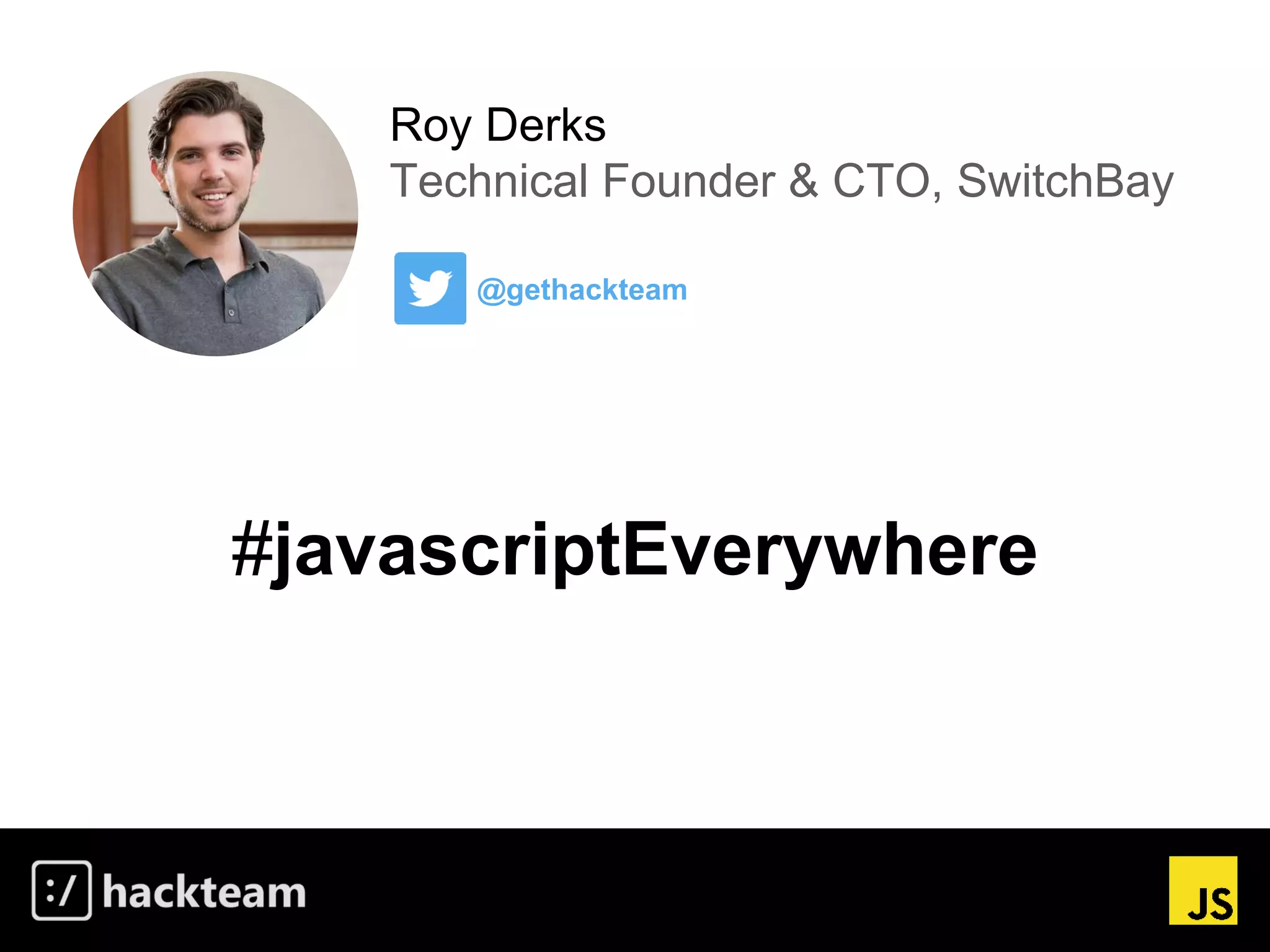
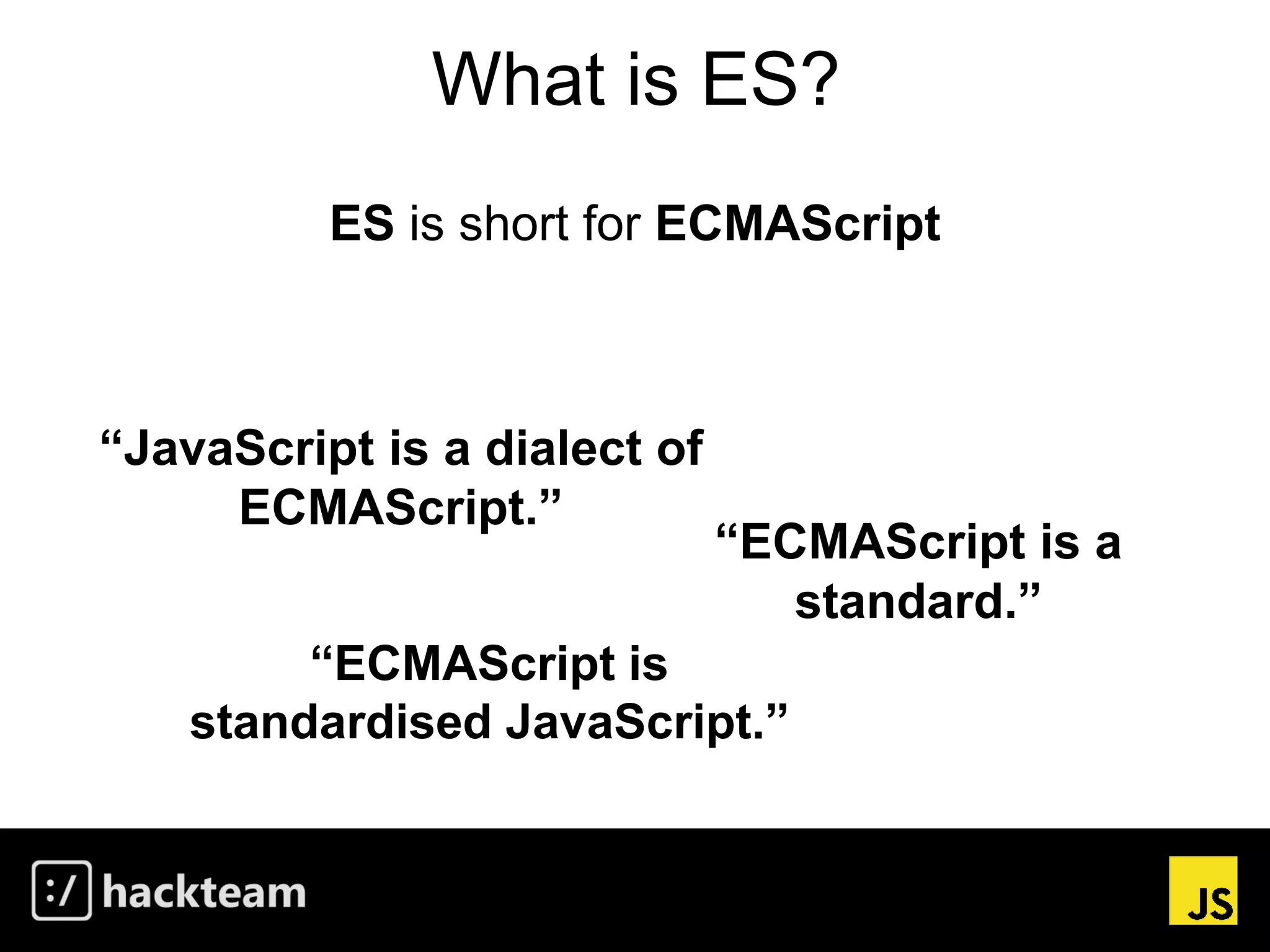
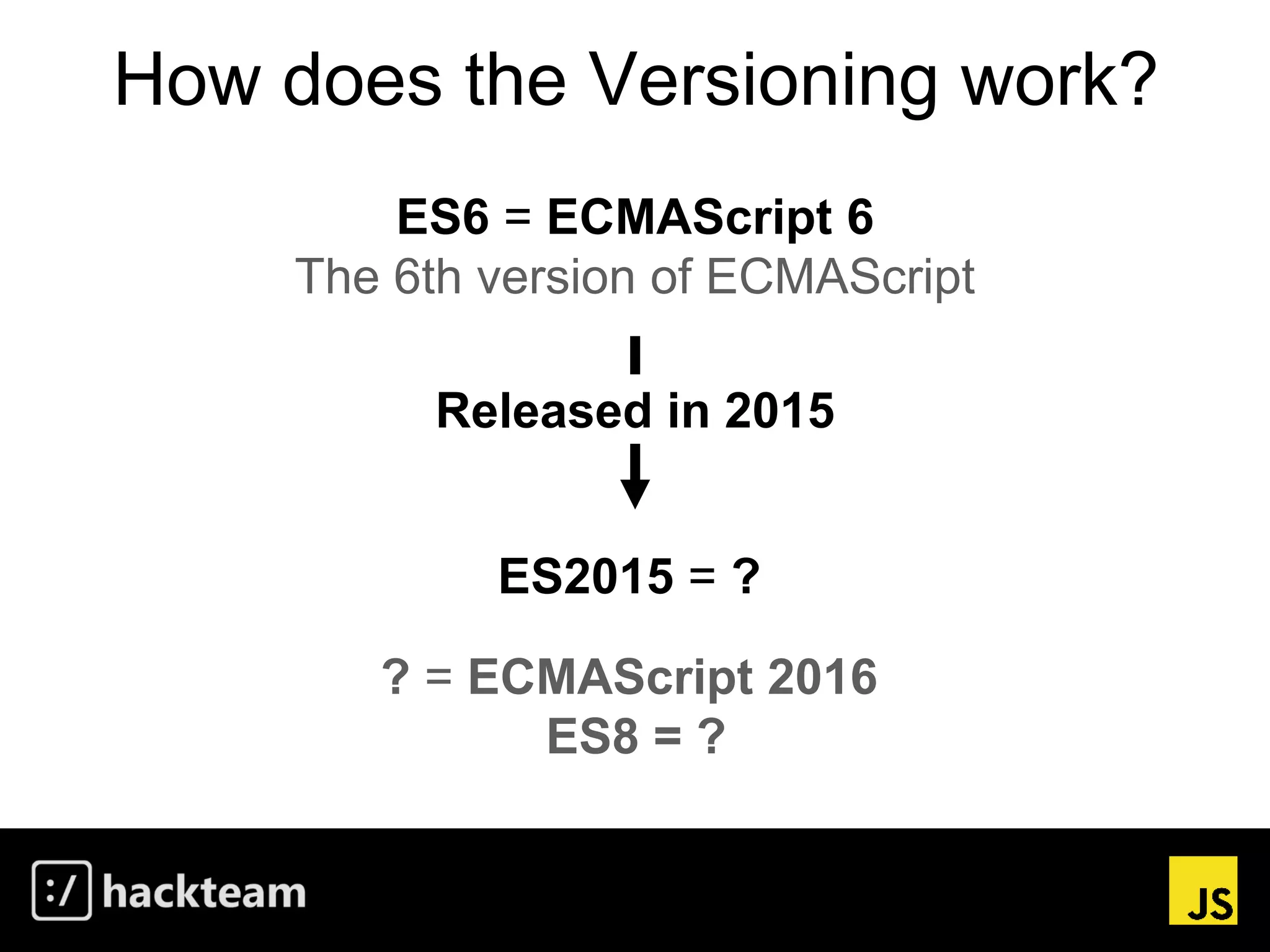
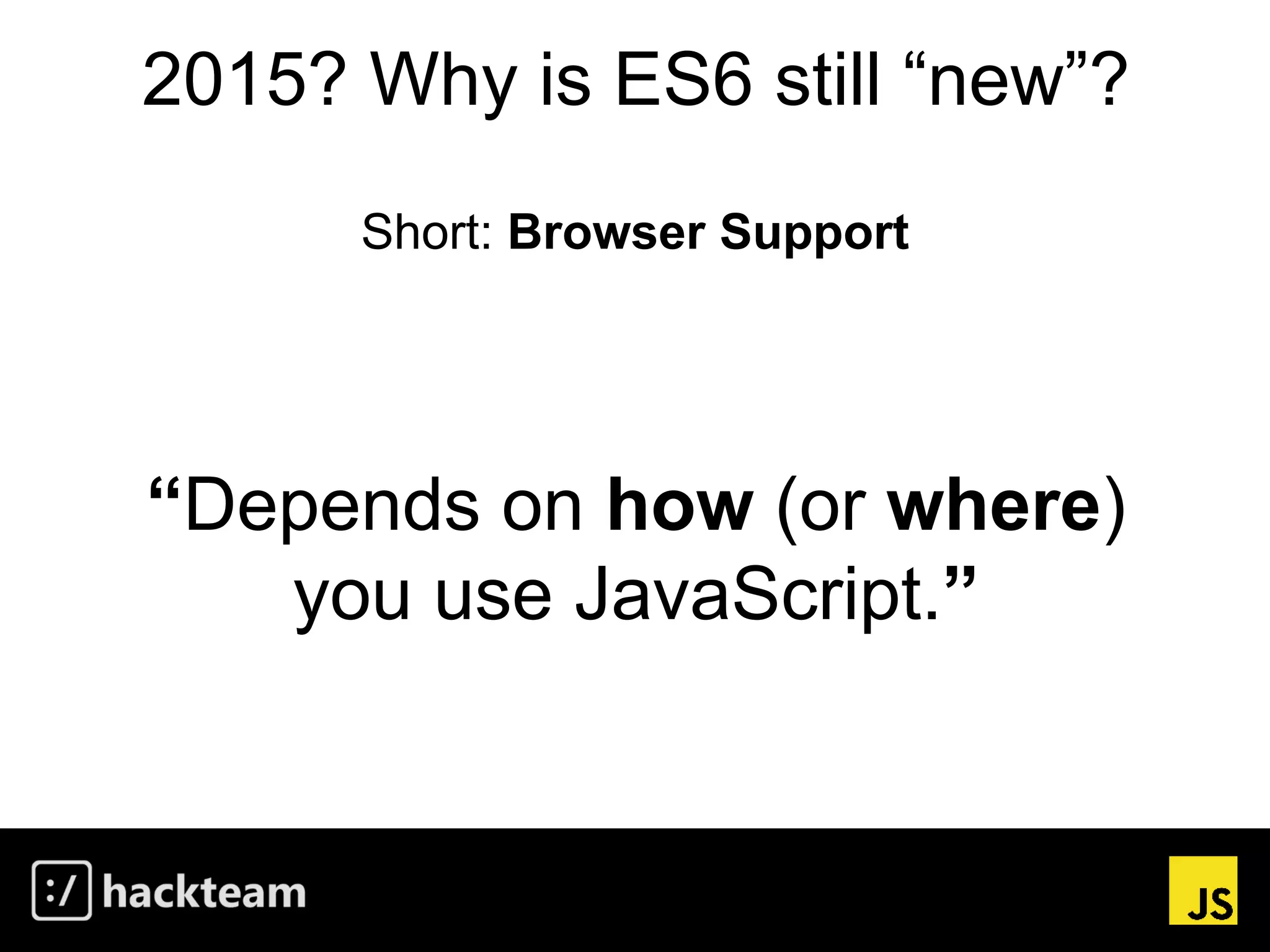
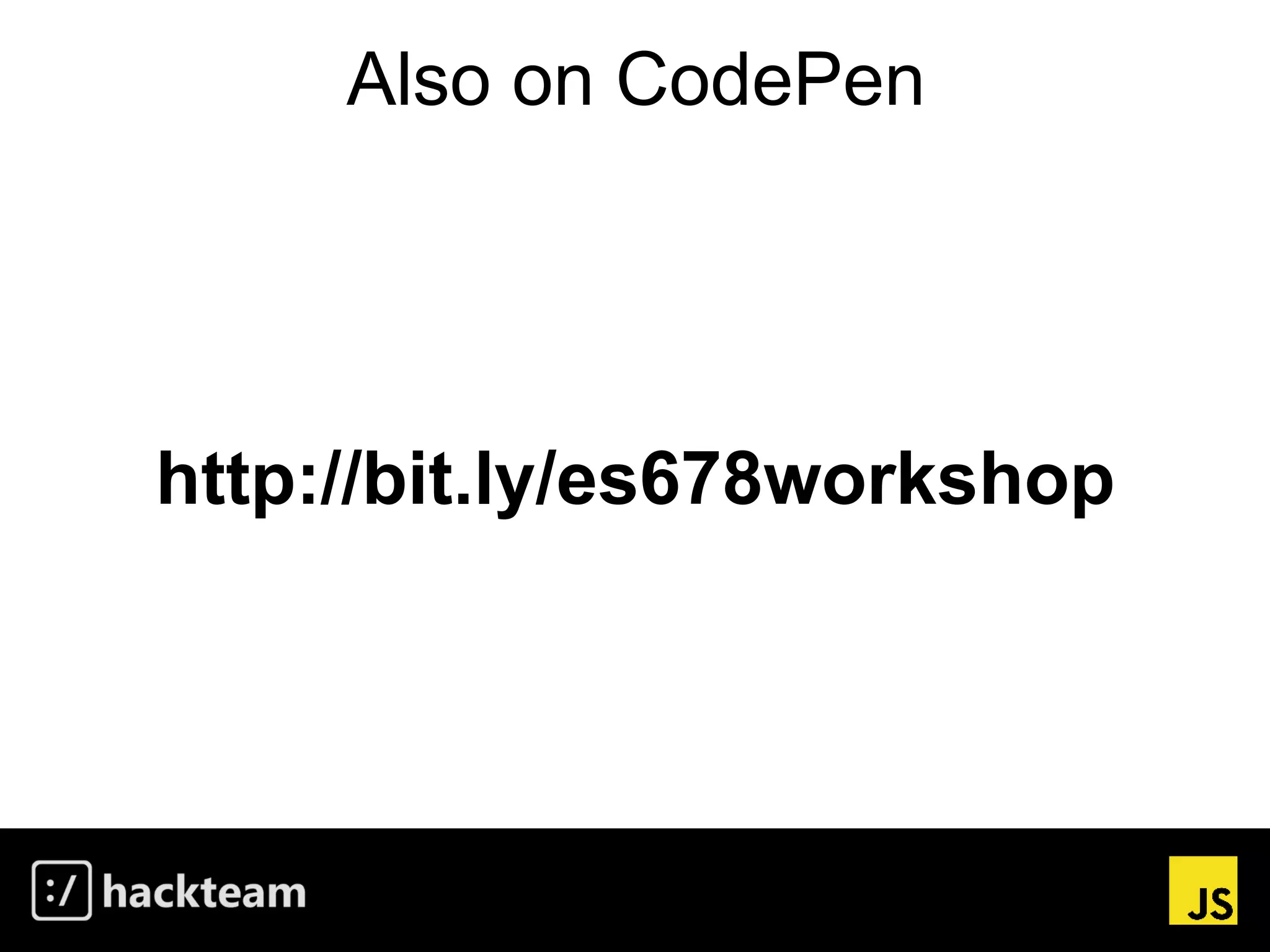
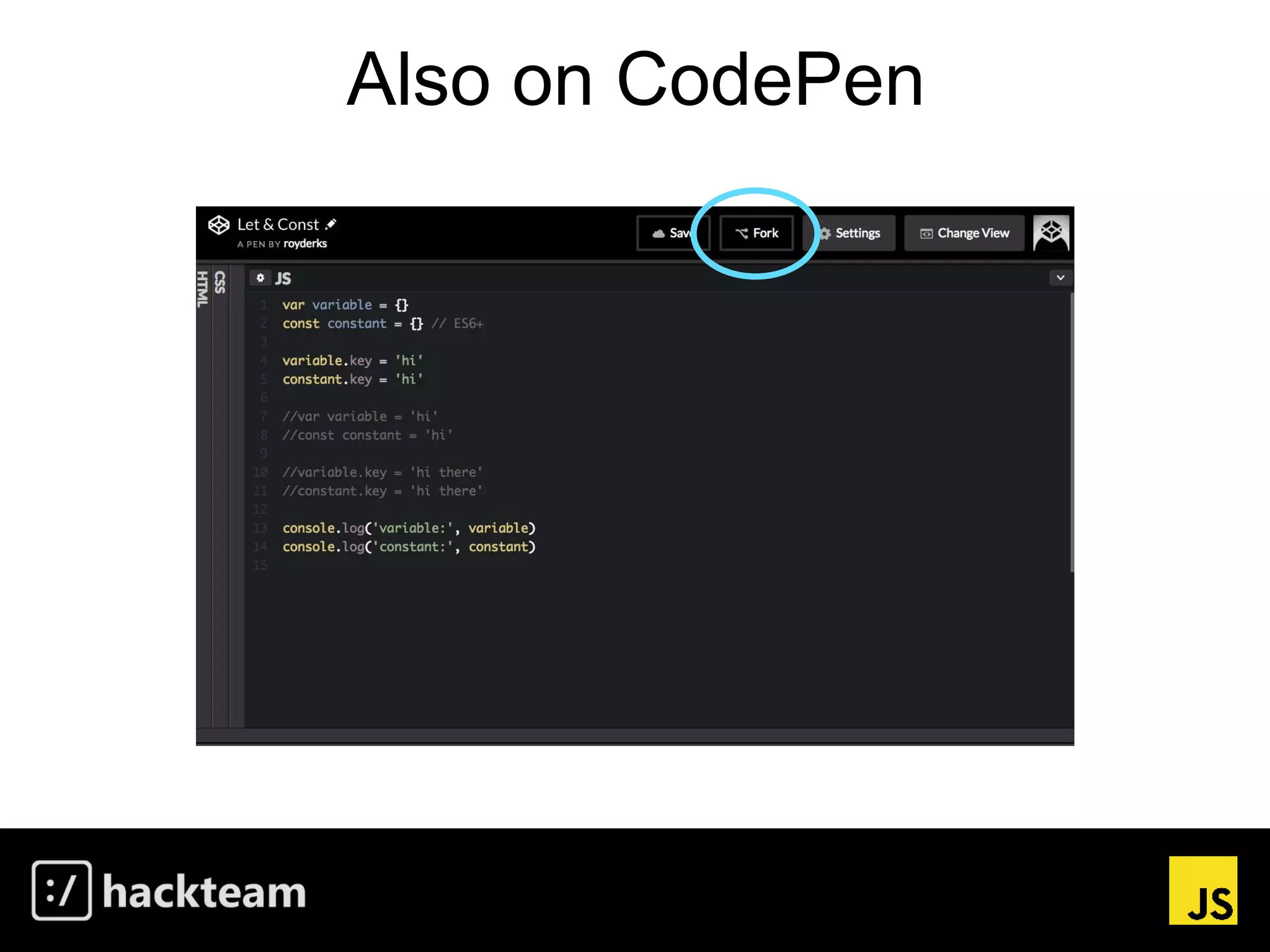
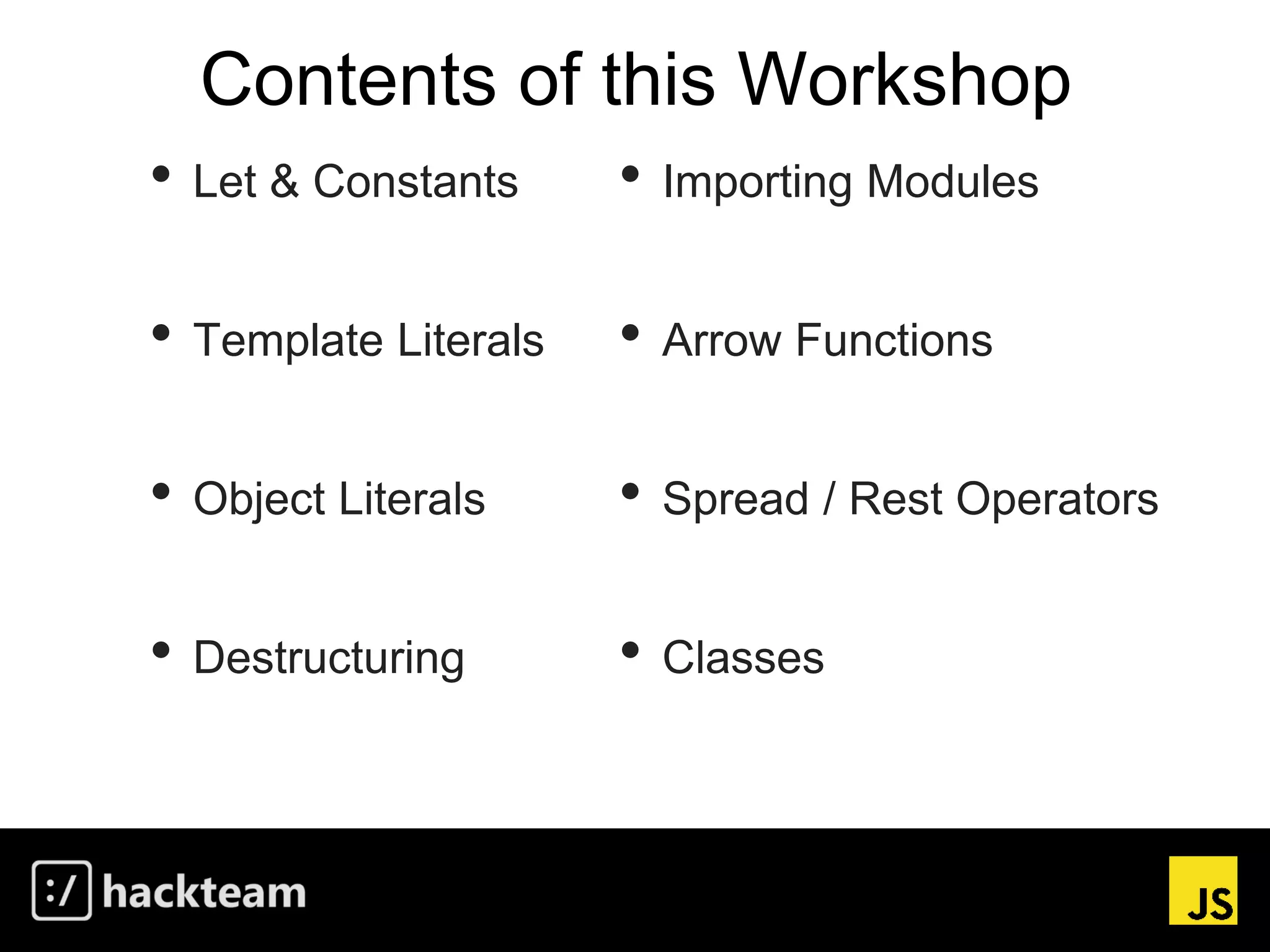
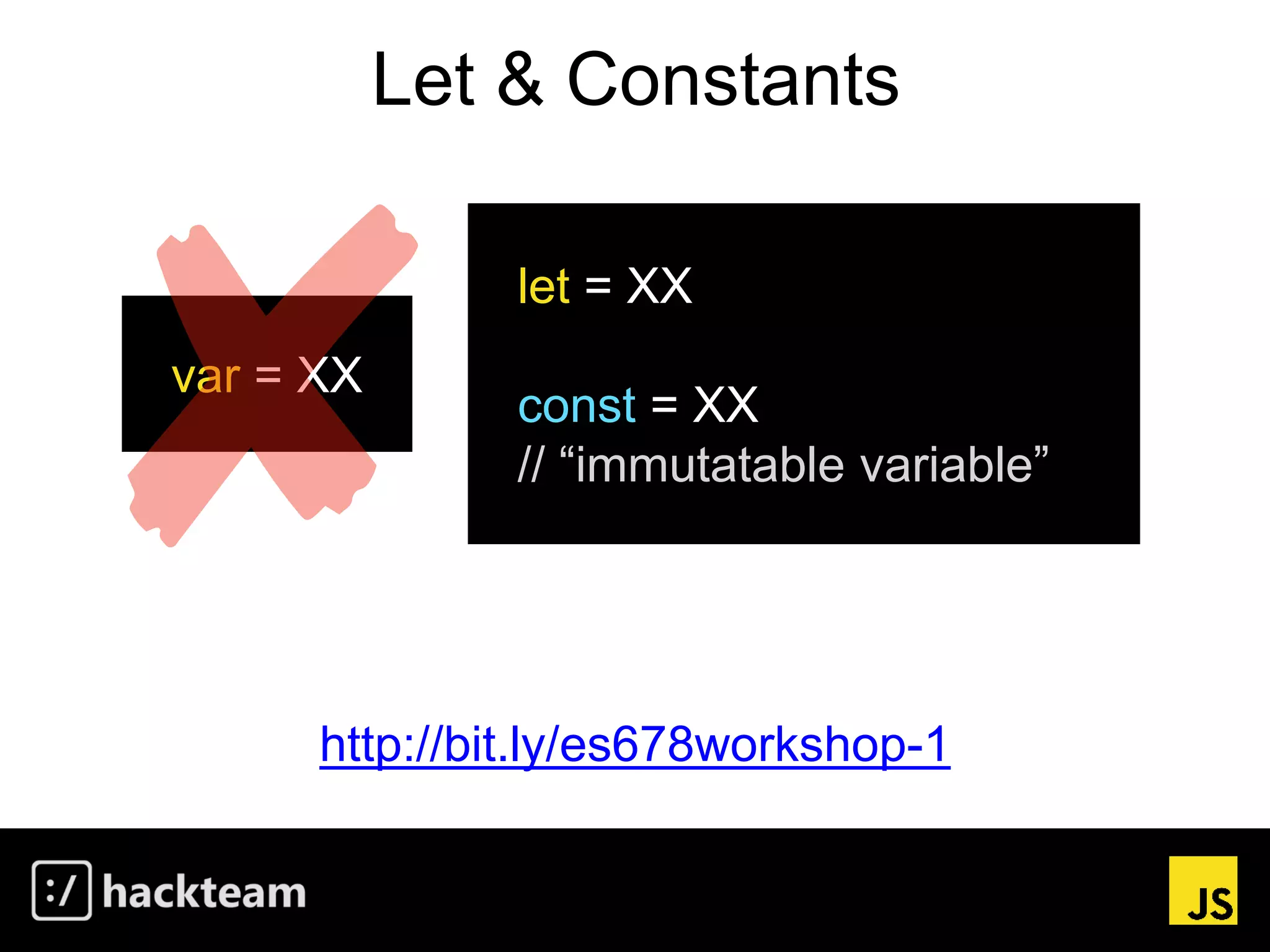
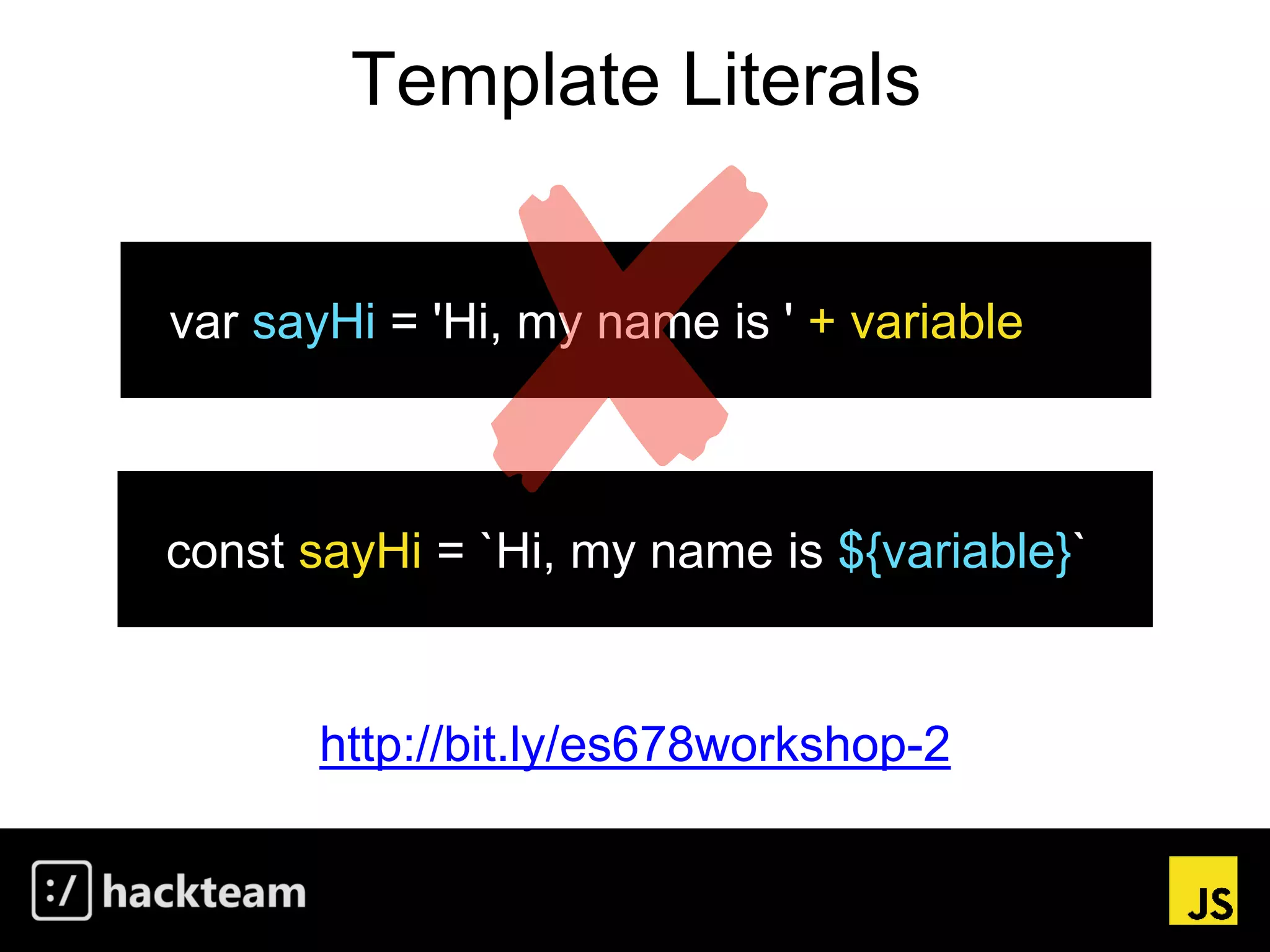
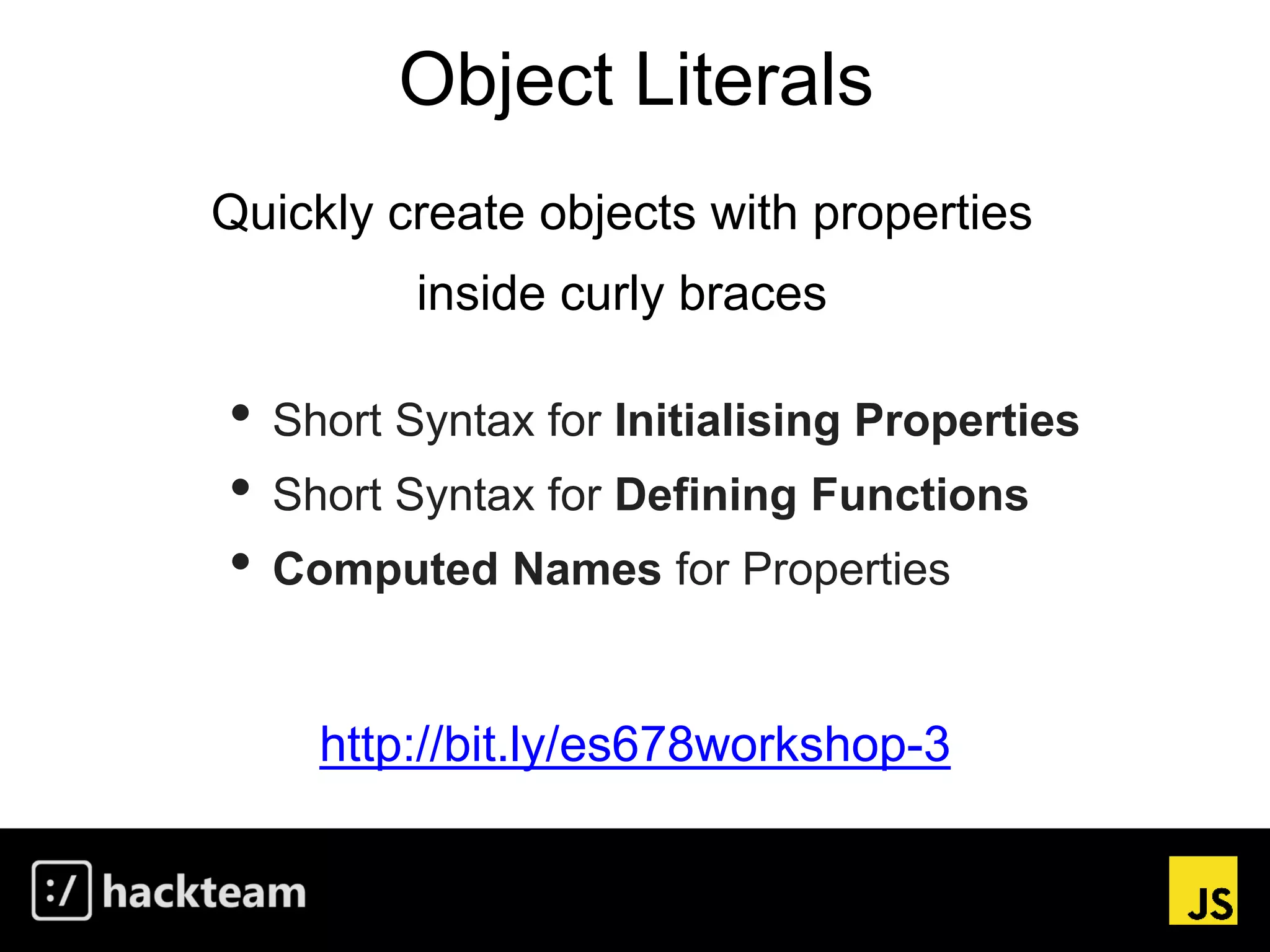
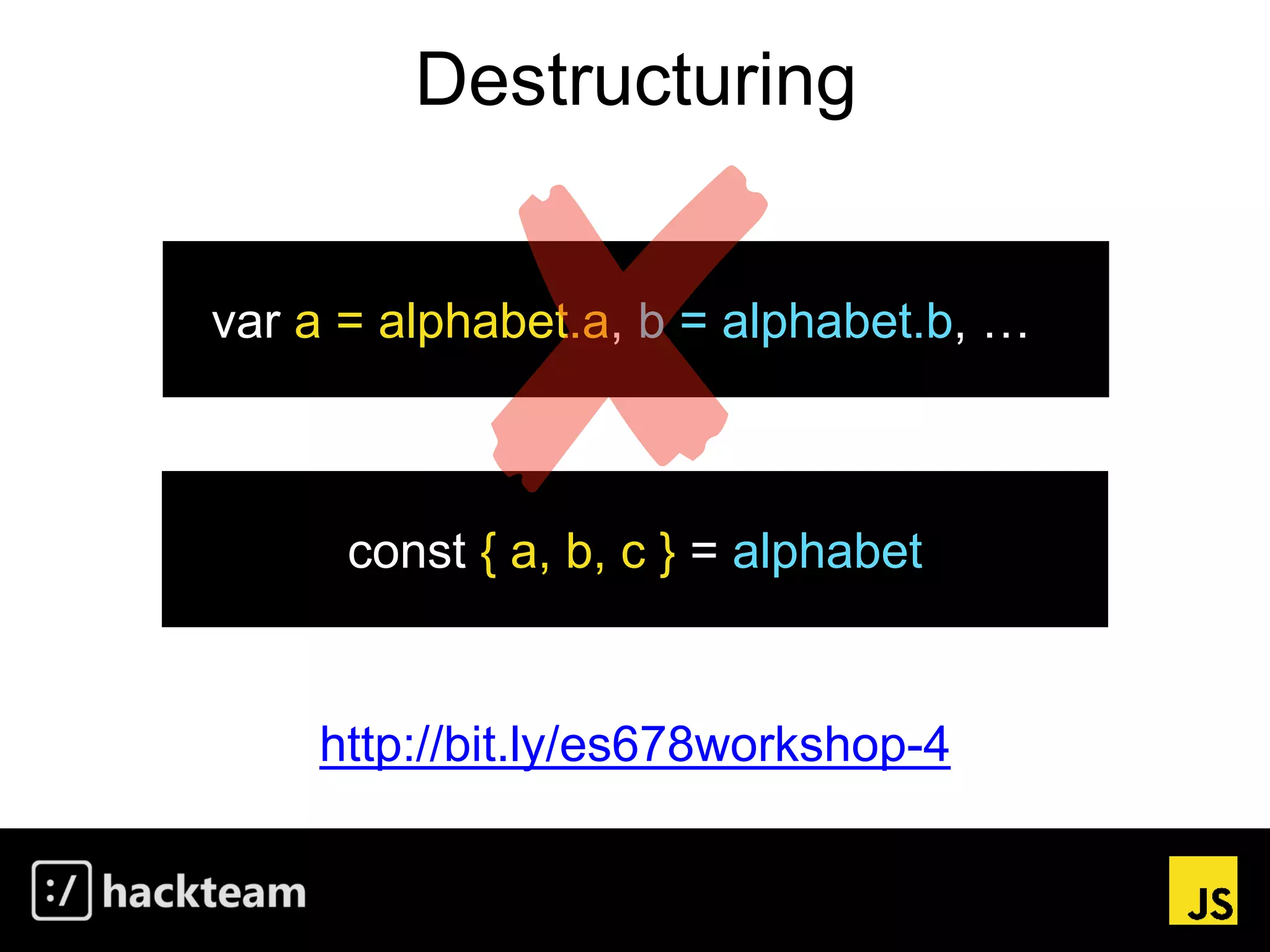
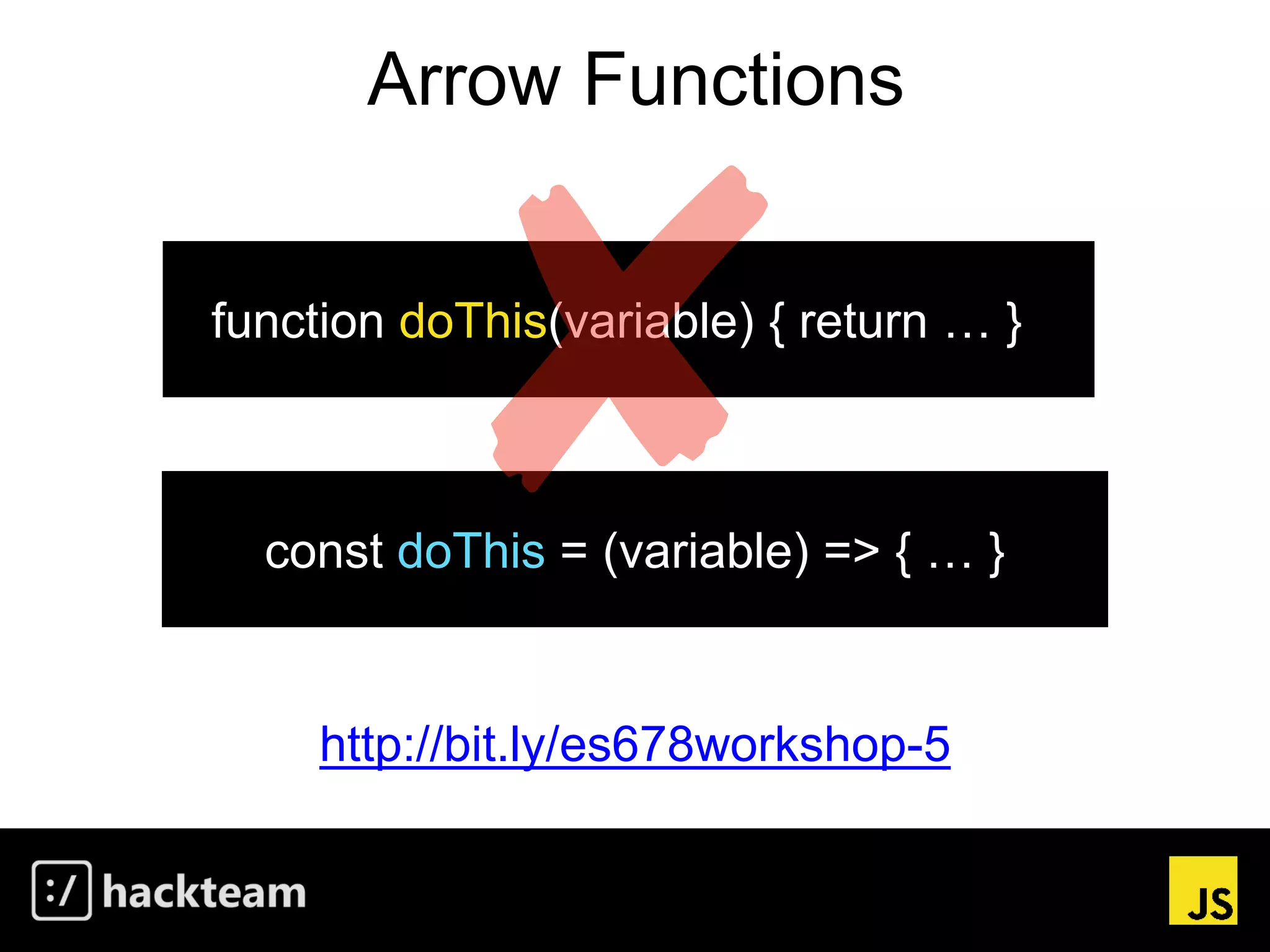
![Spread Operator
http://bit.ly/es678workshop-6
Combine or Spread elements into
collections (Arrays and Objects)
const params = [‘param2’, ‘param3’]
const combined = [ ‘param1’, …params ]](https://image.slidesharecdn.com/workshopes678-180622092835/75/Workshop-JavaScript-ES6-14-2048.jpg)
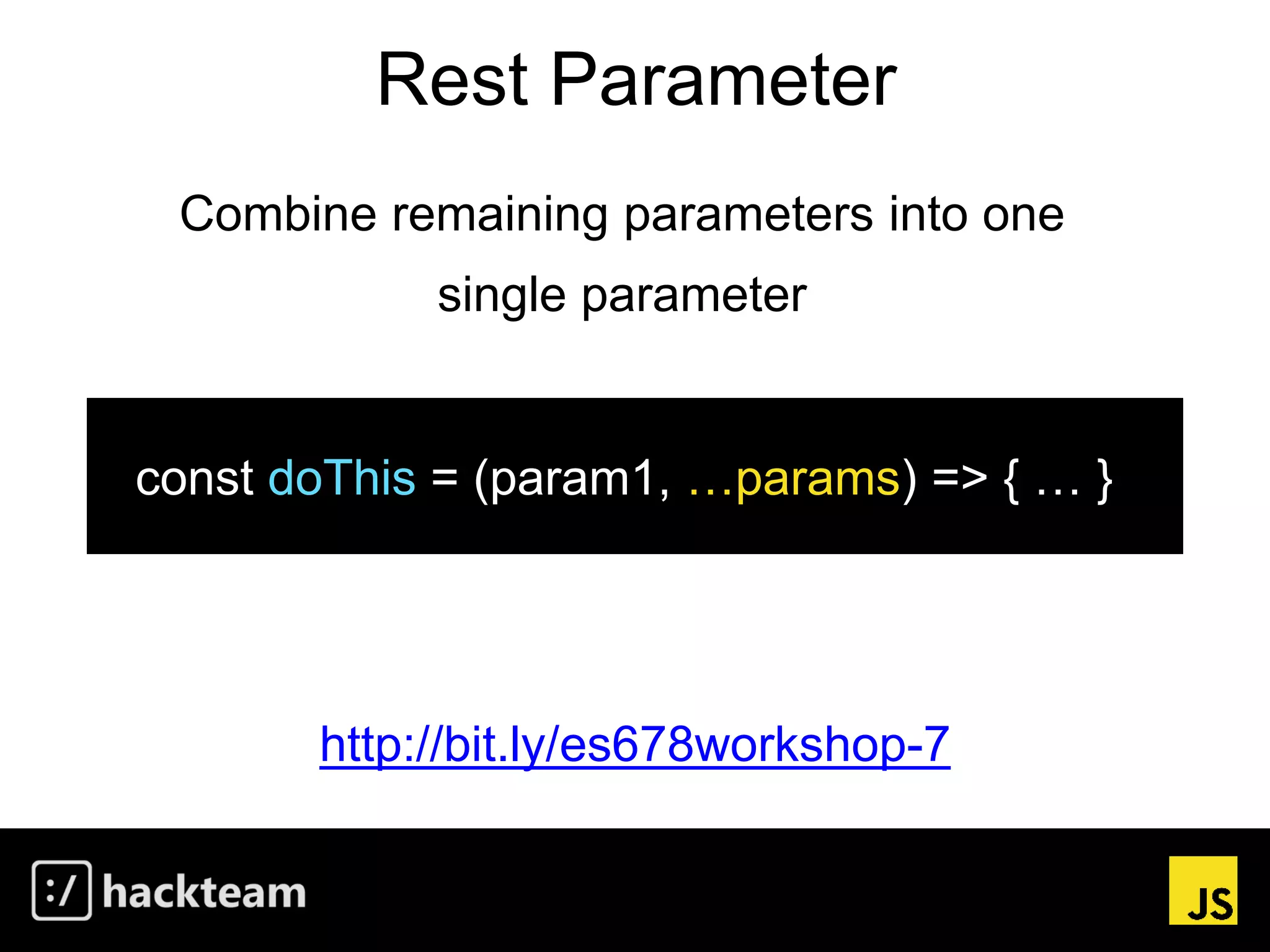
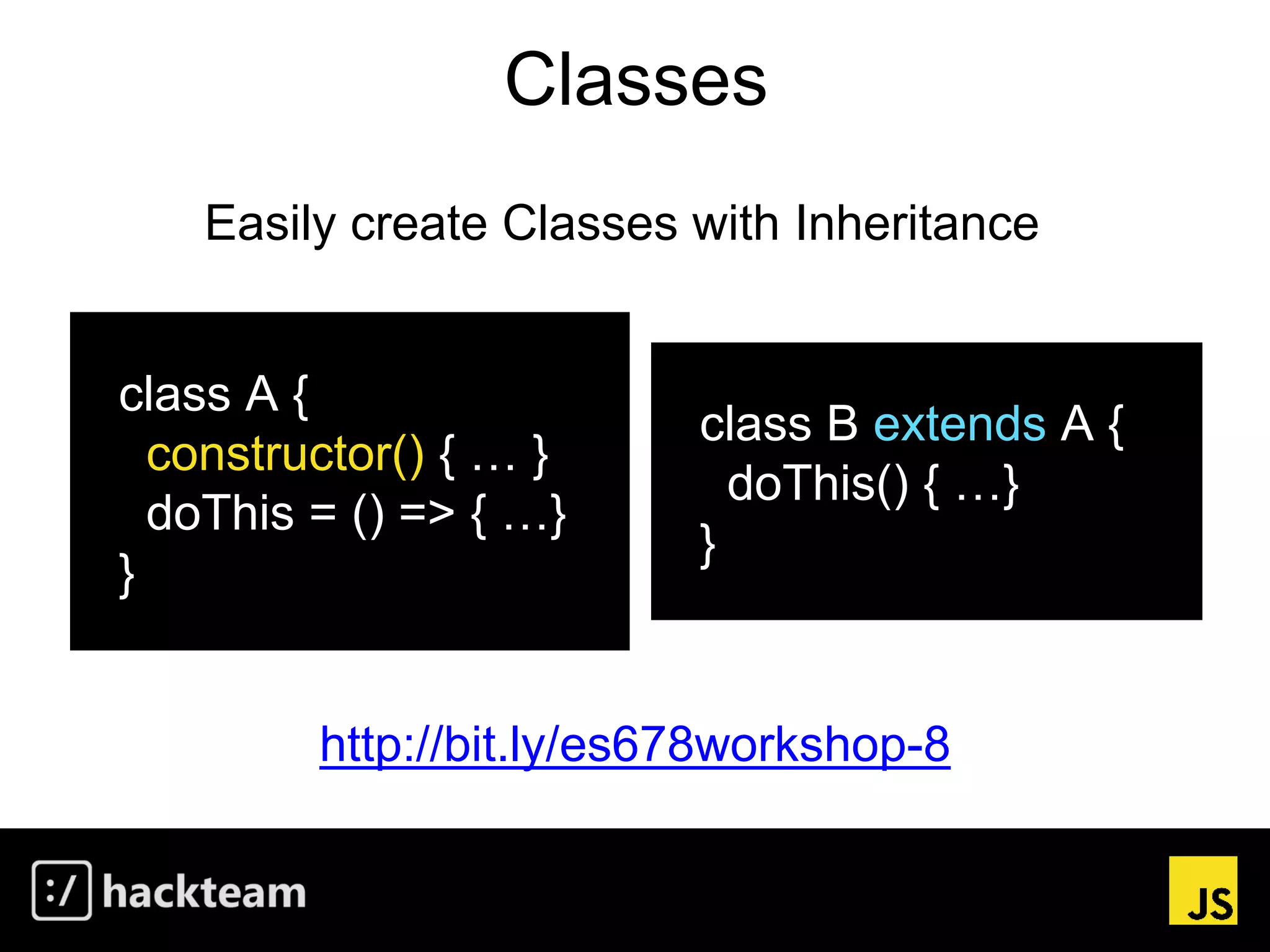
![Iterables / Iterators
http://bit.ly/es678workshop-9
const iterable { [Symbol.iterator](): iterator { …} }
next() {
value: …,
done: true | false
}](https://image.slidesharecdn.com/workshopes678-180622092835/75/Workshop-JavaScript-ES6-17-2048.jpg)
